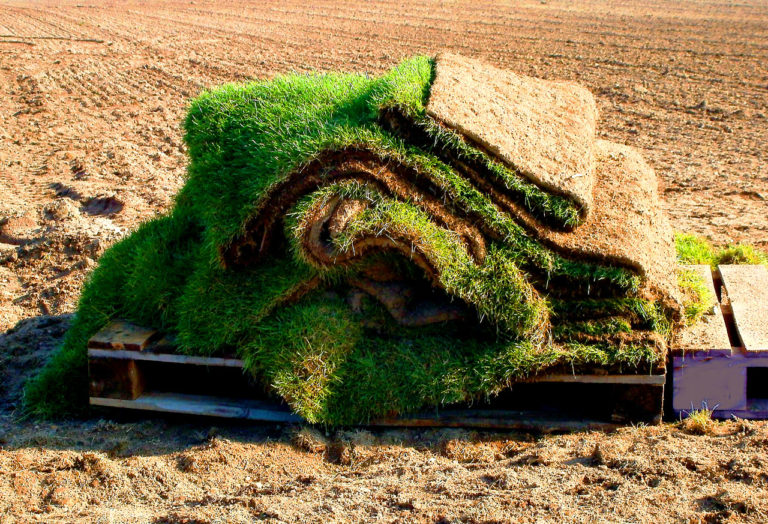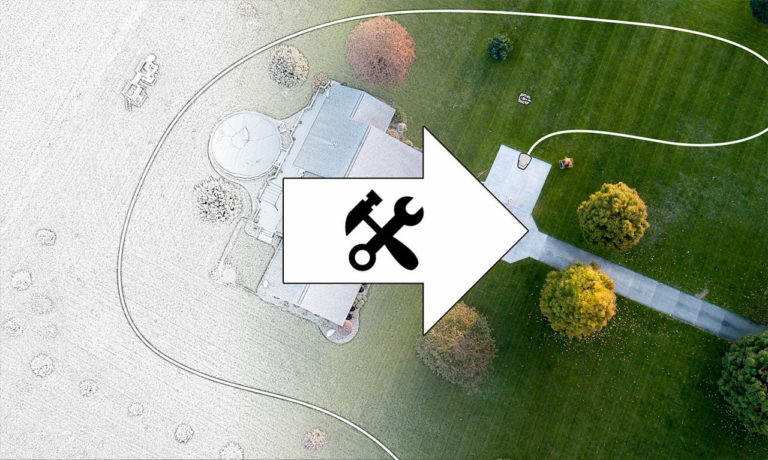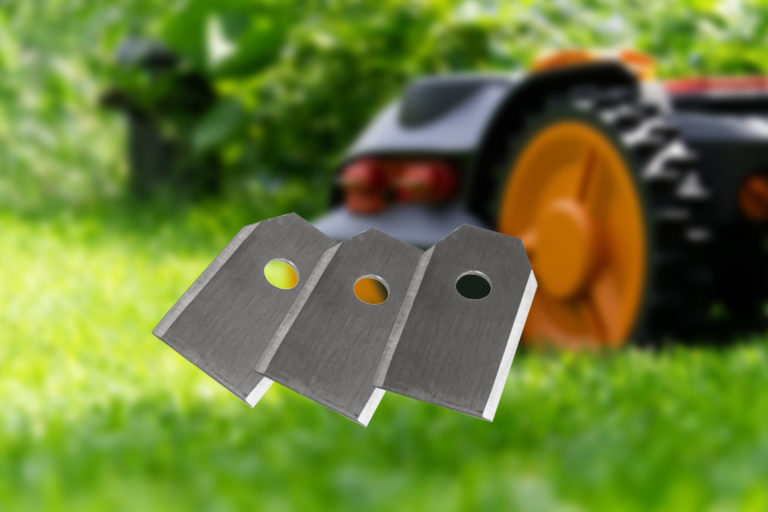Robotic mowers do a good job of mowing the lawn, but they can have problems at the edges, often leaving behind a small strip of unmowed grass. But how much left-behind grass are we actually talking about here? Why is this the case? And can you do something about it?
How much grass do robotic mowers leave at the edge? How much grass is left at the edge of the working area of a robotic mower depends to a lesser extent on the model and to a greater extent on the nature of the lawn’s edge. In the worst case, up to about 7 inches of grass can remain standing. Obstacles such as walls or fences can prevent the robotic mower from mowing all the way to the edge. But this does not have to be the case.
Of course there are certain differences from model to model. But they are within limits. Even with the edge mowing function, you should not expect miracles if the lawn edging is not suitably designed.
In this article I will explain how much grass remains on the edge in the worst case, why this edge is left behind, and what you can do about it.
Contents
How much grass do robotic mowers leave on the edge?
The width of the strip of lawn that remains at the edge of the mowing area of a lawn robot depends mainly on the nature of the border. There is a generous safety distance between the body of the robotic mower and the blades, which the manufacturers have designed so as to avoid injury if the robotic mower hits a person or animal.
If your lawn grows to the edge of a wall or fence, it will therefore hit the fence with its body (or you have chosen the distance of the boundary wire so that it just doesn’t hit the fence) and therefore cannot mow this last section. There is not much difference between the various models of robotic mowers on the amount of grass they leave at the edge. As a rule of thumb, however, the larger the model, the more grass is left standing.
Essentially, the amount of grass left at the edge depends on how far the boundary wire is from the edge of the lawn. This must be placed at different distances depending on the nature of the edge. Three cases can be distinguished. Here is an example for the HUSQVARNA Automower 310:
- Along poured concrete or asphalt paths, ground-level brick or stone paths, or lawn edging stones: boundary wire approx. 4 inches from the edge – no grass will be left behind
- Along flowerbeds or gravel paths: boundary wire approx. 12 inches from the edge- about 6 inches of grass will be left behind
- Along walls, trees or fences: boundary wire approx. 14 inches from the edge – about 8 inches of grass remain
For consistency’s sake, I will be comparing the brands below only the values from the following scenario: when the lawn grows to the edge of a wall, tree or fence.
Here are a few examples of how much grass is left standing at the edge with a few different models of robotic mowers from various manufacturers.
Husqvarna
- HUSQVARNA Automower 115H 10 Inch
- HUSQVARNA Automower 305 9.6 Inch
- HUSQVARNA Automower 310 11.2 Inch
- HUSQVARNA Automower 315 11.2 Inch
- HUSQVARNA Automower 315X 11.2 Inch
- HUSQVARNA Automower 430X 11.8 Inch
- HUSQVARNA Automower 430XH 11.8 Inch
- HUSQVARNA Automower 435X AWD 12 Inch
- HUSQVARNA Automower 450X 11.8 Inch
- HUSQVARNA Automower 450XH 11.8 Inch
- HUSQVARNA Automower 535 AWD 12 Inch
- HUSQVARNA Automower 550 11.8 Inch
- HUSQVARNA Automower 550H 13.2 Inch
Worx
- WORX Landroid L 20V WR150 2.4 Inch
- WORX Landroid L 20V WR153 2.4 Inch
- WORX Landroid M 20V WR140 2.4 Inch
- WORX Landroid M 20V WR143 2.4 Inch
Robomow
- ROBOMOW RC306 9.1 Inch
- ROBOMOW RS612 2.4 Inch
- ROBOMOW RS622 2.4 Inch
- ROBOMOW RS630 2.4 Inch
- ROBOMOW RX20 10.2 Inch
Honda
- HONDA Miimo HRM310 12 Inch
- HONDA Miimo HRM520 12 Inch
Ambrogio
- AMBROGIO L200 Carbon Blackline 11.8 Inch
- AMBROGIO L250i Elite GPS 9.7 Inch
- AMBROGIO L350i Elite GPS 7.9 Inch
- AMBROGIO L400 8.1 Inch
- AMBROGIO L60 Deluxe 7.7 Inch
- AMBROGIO L60 Elite 7.7 Inch
- AMBROGIO L85 Elite 8.5 Inch
MowRo
- REDBACK POWER RM18 11.5 Inch
- REDBACK POWER RM24 11.8 Inch
McCulloch
- MCCULLOCH ROB R1000 10.8 Inch
- MCCULLOCH ROB S400 9.9 Inch
- MCCULLOCH ROB S600 9.9 Inch
Of course, it will not be exactly the same in practice because, as mentioned, the nature of the lawn edging has a much greater influence. But this way you will have an approximate guide value.
Why do robotic mowers leave a strip of grass at the edge?
I have covered it briefly in the previous section, but I would like to explain in detail why sometimes grass will remain at the edge of the mowing area when using a robotic mower.
The problem is that the blades of the robotic mower do not reach all the way to the edge of its outer shell. There is always a certain safety distance here, which should ensure that the risk of injury is as small as possible when the robotic mower approaches a person. But even without this safety distance, the robotic mower would probably not be able to mow right to the edge. Due to the very tightly positioned wheels of the frame, the blade hub of the robotic mower cannot reach all the way to the edge of the car body.
The following graphic should illustrate the whole thing to you once again in detail using the example of the Husqvarna Automower 450X. The graphic shows a schematic robotic mower driving along a wall (shown in grey on the right). In the middle of the robotic mower the blade hub of the mower is indicated. As you can see, there is a certain distance between the blade hub and the bodywork, which means that the last strip of grass reaching the wall cannot be mowed.
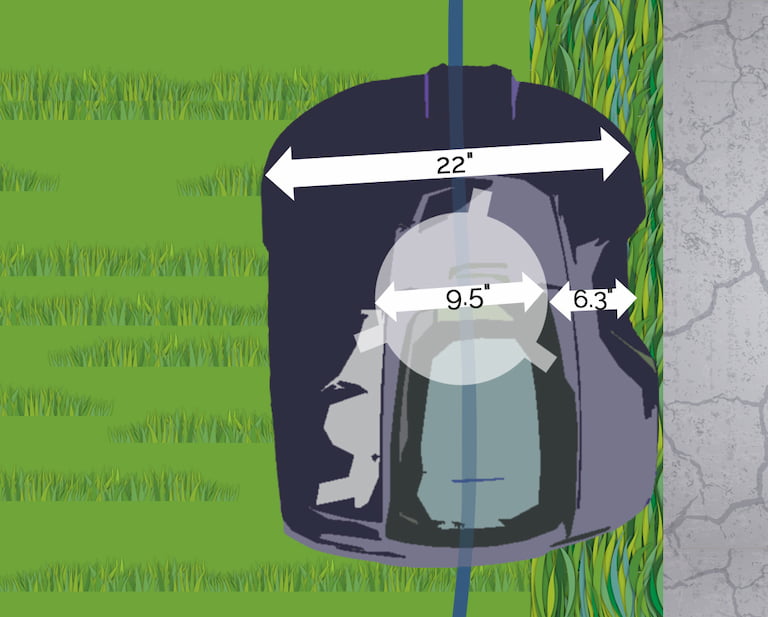
The robotic mower does not reach the very edge, due to the safety distance between the mowing unit and the bodywork and wall on the right. Because of this, a strip of grass is left untouched.
The boundary wire is also shown. As you can see, the robotic mower can drive up to its center on the boundary wire. Therefore, the boundary wire is laid in such a way that the robotic mower just barely scrapes along the wall or bumps against it. A distance of 12 inches is selected for most mowers to fixed obstacles such as walls.
Do robotic mowers with the edge mowing function fix the problem?
Perhaps you have heard of robotic mowers with an edge mowing function or edge mowing mode? When the edge mowing mode of the robotic mower is activated, it then drives around the outside of the lawn along the boundary wire in order to mow the edges. In addition, the mowing unit is slightly offset to one side so that the rotating blade hub is closer to the edge. In order to prevent accidents from happening here, a kind of protective grid is fitted to the underside of the mower on the side where the mower is closer to the outer edge of the bodywork.
But is this the solution to the problem?
Yes and no. Although the width of the remaining lawn strip can be reduced, even these mowers cannot mow the lawn that grows directly against a wall or fence. The strip is only slightly smaller. Along ground level boundaries, however, they actually can cut the lawn all the way to the edge.
By the way, here you can find a current overview of all current robotic mowers with an edge mowing mode, which I would recommend.
However, keep in mind that we’ve been talking about the worst case scenario, i.e. when the lawn grows right up to an obstacle. Even with a conventional lawnmower, it is not always easy to mow right up to the edge. Mowing robots with edge mowing function do not need quite as much distance to a wall as other mowers.
However, your lawn should always be at a certain distance from a fixed obstacle so that the robotic mower can drive a little over the edge of the lawn and mow it completely.
If you want to know more about robotic mowers with edge mowing functions and you want to get an overview of what models are available, then this article should be interesting for you.
The border of the lawn is crucial
So far we have only considered the case where the lawn borders directly on the edge of a solid obstacle, such as a wall. This is the worst case possible, in which grass will be left at the edge of the lawn with any robotic mower, regardless of the model.
On the other hand, the robotic mower has fewer problems at other borders where it can drive a little over the lawn. For example, at the border of flower beds (when the planted flowers do not border directly on the lawn), the robot mower can drive a little over the border and thus mow a little further to the edge.
The remaining-grass problem is also not as bad in the case of bushes and shrubs. Nevertheless, a bit of grass on the edge can still remain standing, depending on how far the robotic mower can drive over the edge and where exactly the boundary wire is laid. You should always lay this in such a way that the robotic mower can get far enough to the edge, but also does not drive too far over the lawn and get stuck in the hedge or flower bed, for example.
What you can do to make the robotic mower truly mow to the edge
The solution is therefore to create a strip at the edge of the lawn on which no grass grows and which the robotic mower can easily drive over. The best way to achieve this is with level lawn edging stones (sometimes called mowing edge stones), or edge plates.
I show this using the example of lawn edging stones. The following graphic is similar to the one above, except that this time the edge of the lawn is “paved” with level lawn edging stones. The robotic mower can easily drive a good distance beyond the edge of the lawn and really mow to the edge. The boundary wire can now be laid at a distance of only 2 to 4 inches from the edge of the lawn.
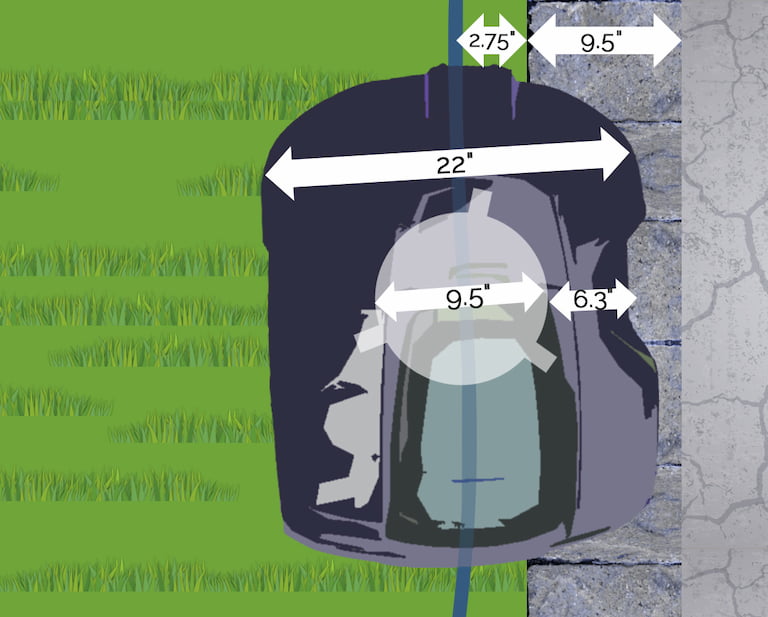
With a ground level lawn edging stone, grass only grows where the mower can reach. The mower can drive onto the edging stone and thereby reach every last bit of grass.
Here the whole thing again from a profile view:
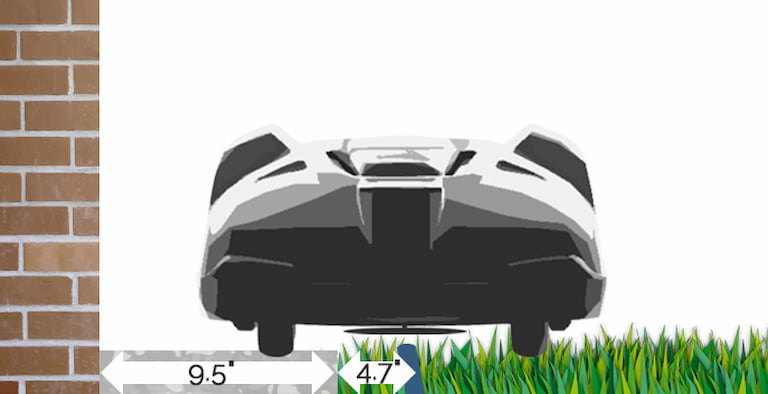
Photo: Own graphic
Once laid around the entire lawn, there is no more annoying trimming of the lawn edge. From now on, the robotic mower really does all the mowing for you.
If you can’t or won’t reconfigure the boundary
If you do not have the possibility to reshape the edge of your lawn by laying level lawn edging stones or something similar, you will have to regularly trim the edge of the lawn that is left standing. But to make the work less laborious, you do not necessarily have to use garden shears. Luckily, there are special tools for this, which make the work at least a little easier. I can present two tools to you right now:
- WORX WG163 20V Cordless String Trimmer & Edger, 12in (click to view on Amazon) – This is in my opinion the best lawn trimmer for the job. With it you can easily cut the edge of the lawn and mow away everything that is left.
- OREGON ST275 Cordless String Trimmer & Edger – If you are looking for a more high-end tool with a more sophisticated design, this is the right trimmer for you. It is lighter and has a more ergonomic design, making it more comfortable with less fatigue. It has many more useful features, like a speed control among others.
Related questions
Which lawn edging stones should I use? The lawn edging stones should be at ground level and laid in such a way that the lawn cannot grow in between them. They should also blend in well with the garden visually. You can use dovetail stones, 9 x 5 x 5 granite stones, concrete pavement slabs, or rectangular paving stones.
How wide should the lawn edging stones be? The width depends on the model as well as on the adjacent area or object. If there is no solid obstacle behind the lawn’s edge, 4 inches is usually sufficient, but if there is a wall behind it, it should be more like 8 inches. You can find out more here: What width of lawn edging stones to use for a robot mower.
How is the boundary wire laid? The cable starts and ends at the charging station. It is laid once completely around the mowing area, at a certain distance from the edge, depending on what kind of edge it is. It is advisable to lay the cable above ground for testing purposes, repair any problems during operation and bury it after a few weeks. We have summarized the complete installation process here: Planning and laying the boundary wire.
